- Which brand and what type of running shoes look best and which ones feel most comfortable is quite personal. Asics, HokaOneOne, Brooks, Saucony, Nike, New Balance, there are so many good quality brands out there. But which type is best for you? Many people choose their running shoes by look and feel. Did you know that more than 80% of all runners wear shoes, that are not supportive to their feet’s needs? Choosing the right running shoes is essential to minimise the risk of injury.
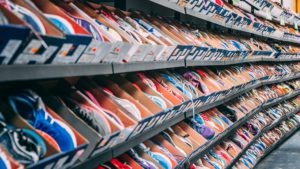
I must admit that – in the past- when I went out for new running shoes, I primarily focused on color and design. “Will they match the sports outfits that I have?” seemed to be a very important question to answer. If only I had been more aware of what I know now…. Even though they felt comfortable during my runs, still they turned out to be not the right shoes for me. My podiatrist showed me that the shoes that I chose, did not have the support and shock absorption that was needed for my specific foot shape. Wearing them intensively at my training sessions and during my first half-marathon has certainly contributed to developing a stubborn heel injury (plantar fasciitis ). 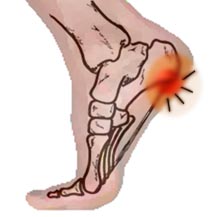
I ended up with a lot of pain and it took me 1.5 years to fully recover. I’ve learned my lesson the hard way. Of course there is much more to injury prevention than just buying the right running shoes, but wearing the shoes that do support your feet’s need, will definitely help!
When to change your running shoes?
Running shoes are most protective and supportive when they are brand new. Just by looking at your old runners, you might not notice immediately that they are not at their best anymore. Especially after you’ve washed them, they might even look like new again. But in fact, they do wear down over time, although it’s not always visible. The shock absorption for example, will gradually decrease as the cushioning inside the sole will not last forever. Old running shoes are less supportive and they may increase the risk of injuries and pain in the feet, ankles, knees, legs, hips and back.
How quickly your runners shoes wear down depends: on the surface that you run on, the weekly mileage, your body weight, foot shape and even the way you run. Running on roads, for example, will wear out shoes faster than running on softer forest tracks. And a heavier person with over pronation, who runs on a daily basis, will wear his shoes out faster than a lighter, neutral runner, who runs only a few times per week.
In general, it is recommendable to replace your running shoes after 1000 kilometers (approx. 600 miles). After this mileage their initial cushioning and shock absorption has decreased by about 30%.

There are a few visible signs to recognise that it’s time to buy a new pair of running shoes:
- the outer sole is (partially) damaged and the white mid sole is visible
- the mid sole shows creases
- the heel cover becomes too flexible and less supportive
- the heel lining shows a hole
- the upper shoe has tears at the front and your toe peeps out
- the shoe soles aren’t straight anymore. Your shoes seem to lean to one side when you place them on a flat surface
Running specialty stores – Run Analysis
When you have decided to go for a new pair of running shoes, try to get an expert opinion and the best advice on shoe brands and types. Take your old running shoes with you to a running specialty store to show them the wear and tear of your current pair.
My podiatrist referred me to a runners store, where they could perform a run analysis. If you can find a running specialty store in your area, that offers this service, I would really recommend you to go there. A run analysis is an assessment of the way you run: how you land your feet (on your heel, mid foot or front foot) , how you roll your feet and how much your ankles bend to which side (neutral, over or under pronation). It will give you very useful information that you may need to select the right shoe type, so that you’ll have the best support during a run.
What is pronation?
Pronation is the way and amount the foot rolls inward after you’ve landed it on the surface during a walk or run. With each step, our feet naturally roll a bit inward to help the lower leg to deal with the shock of its landing. But some people’s feet pronate much more (over pronation) or less (under pronation or supination) than others. This does affect the way of running. And, in combination with the wrong running shoe, it could increase the risk of injury.
Check your old shoes
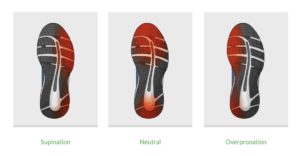 In case you can’t have a run analysis, have a closer look at the outer soles of your old running shoes and find where they show most wear:
In case you can’t have a run analysis, have a closer look at the outer soles of your old running shoes and find where they show most wear:
- Under pronator / supinator: most wear at the outside or their soles. If you place your shoes on a flat surface and they will slightly tilt outward.
- Neutral Runner: wear along the whole shoe sole, from the outer heel side to the big toe. If you place your shoes on a flat surface, you may not see any tilt at all.
- Over pronator: most wear on the inside of the heel and under the ball of the foot near the big toe. If you place your shoes on a flat surface, they will slightly tilt inward.
Body weight
Runners with a higher body weight, will cause more stress on the lower legs than a lightweight runner. Therefor heavier runners might need to go for shoes with extra cushioning. It’ll make their landings more comfortable. If you’re a lighter runner, you can afford to go with less cushioning and lighter shoes. If your BMI is 27 or higher, then you should find shoes that are designed for heavier runners. Check your BMI here.
Shoe sizes – length and width
The right sized shoe should wrap comfortably around your foot. The foot must be centred on the platform of the shoe. Be aware that during a run your feet swell a bit. Usually you need a bigger size for your running shoes than for the normal shoes, that your wear during the rest of the day. Depending on your foot length ánd width, choose the right shoe size.
Most quality running shoe brands have availability in both length and width shoe sizes. Some even offer extra wide or narrow size options. Your runners should never pinch or hurt when you put them on. If you have wide feet, like myself, you’ll be uncomfortable from the moment you start running in too narrow shoes. This might even result in blisters. Your shoes shouldn’t feel floppy either, because in that case they will not offer you the right support.
Perfect fit

- Lace your shoe tightly to get the heel securely locked in. But not so tight that you can’t move your toes at all.
- Laces should be Firmly tight, without cutting your blood circulation off.
- Keep one centimeter extra in front of your big toe, to give your feet the room to swell during your runs.
- Your feet shouldn’t be shifting or wiggling inside tightened shoes.
Additional tips: always wear your running socks when you’re trying on new runners shoes, And if you have any orthotic insoles, take them with you as well and put them inside before you try the shoes on. Of you don’t heave orthotics, but still need some extra support, it’s advisable to get other sports insoles . If the shop has a treadmill for you to try out the running shoes while running, don’t feel embarrassed and just do so for a few minutes!
Running surface
Where is your favourite run? In the forest on a trail, on the the roads, at the beach, around a grass field, on a nice running track or maybe at the gym on a treadmill? You could go for a run at any place! That’s why it is so popular, I guess. Depending on the surface you choose to run on, you’ll need different shoe types, with more or less cushioning for best shock absorption and more or less profiled outer soles for best grip.
Forest trails or dirt roads are naturally softer for your landings, but may contain slippery, uneven parts, so you will need trail shoes with more profile. Concrete roads have a harder surface and might need shoes with more cushioning. For treadmills, you can use your road shoes as well. Change you shoes to the surface you’re running on to prevent discomfort and injuries.
Different running shoes for different running goals

Some runners are targeting a personal record time, others aim to end up in the top 10 of the next marathon. Whilst many runners just want to improve overall fitness. Depending on your own running goals and intensity, you’ll need a different shoe. Ask the runners store which shoe types are best for training and which are more suitable for races.
My personal running goal is to improve overall endurance, but most importantly I’d like keep my runs injury free. I simply like doing sports and specifically running. I have signed up for a half-marathon (just to challenge myself) and I would like to beat my personal record. I have no ambition to win this race though. So when it comes to choosing shoes, I prioritise comfort over speed. For me this means shoes with more cushioning, support and stability. So I would’t purchase a racing shoes, which are designed for higher speed. Racing shoes have less cushioning and are more flexible, they are lighter in weight and they have a responsive and firm midsole for more powerful forefoot striking.
Nike Flyknits are beautiful racers:
Categories running shoes
In most running stores you’ll notice that their running shoe collection is nicely categorised. You’ll find sections for each running surface and within each section you’ll find training shoes or racing shoes in different brands. Per shoe brand you may find a number of types for different needs (pronation, cushioning, shoe weight). My advice is to purchase the running shoes for your specific needs, not the ones that just look great.
In general:
- Under pronators (supinators) often have a high arch and need a lot of cushioning to avoid impact injuries–> opt for cushioned shoes. And if needed replace the flat, standard insoles with a pair with extra arch support. Most shops offer a variety of supportive insoles.
- Neutral pronators usually have a normal arch and don’t need specific support or cushioning–> opt for neutral stability shoes
- Over pronators often have flat feet and should look for extra support or structured cushioning shoes–> motion control shoes
The right shoes for me
My feet are quite wide and for my extremely high arch I wear custom-made orthotics (insoles). I do heel landings and my feet under pronate (supinate). My runs are mainly on roads and running tracks; three times per week (approx. 35 km).
I’m an Asics Kayano’s fan and I recently purchased these Asics Kayano 26 running shoes:
I’m perfectly happy with them and every year Asics launches a new series of the Kayano type. They come in different colours and designs, for everyone’s taste. I need a bigger size than most shops can offer in their women’s selection, but up until today I always succeeded to find the pair that I liked in the right size at the men’s section. I’ve bought additional shoe laces in several colours to mix & match with my sports wear. To me the colours and overall look matters too! 😉
Bottom line: know what your feet need!
To determine what’s the best running shoe for you, depends on many aspects: foot shape and size, the way you run, the running surface, your body weight and your personal running goals. Knowing which specification to focus on will help narrow down your selection and lead you to the best shoe type for your specific needs. I wish you MoreFun2Run on your new running shoes!
I hope this article was helpful to you. Please share this article if you think it might be useful to others as well! If you have any questions, please feel free to send me a private message at an*******@mo*********.com or leave a comment below and I will get back to you.

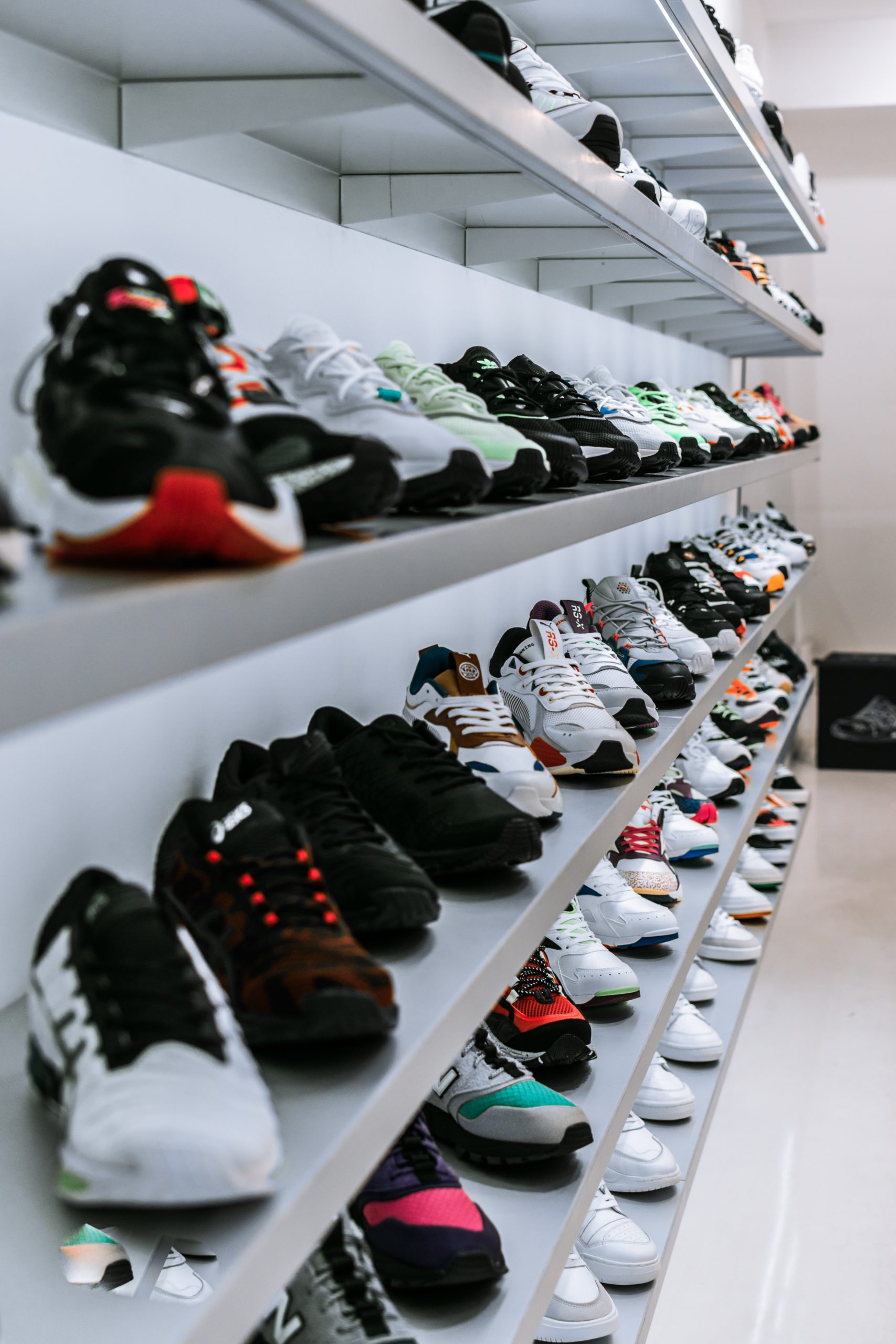





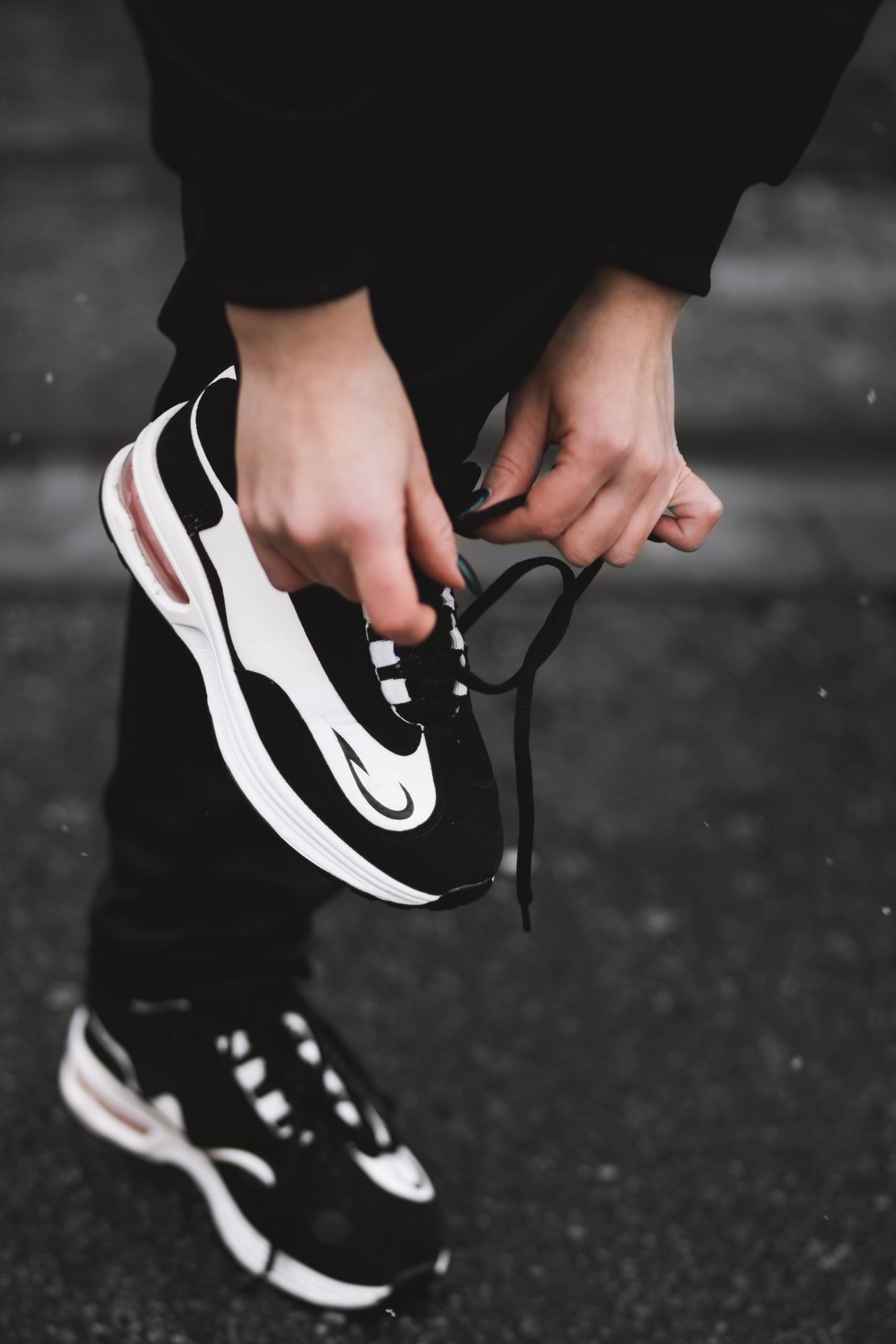
Hi Angelique,
Enjoyable and very informative post, never thought much about my shoes until now.
Cant wait to see what other posts you develop.
Thank you
Shaun
Thanks Shaun, next post is coming soon! 😉
I think it’s safe to say that a vast majority of people buy sports shoes by their colors and design and the last they look for it how anatomic and easy to wear they are. Unfortunately we care more about looks and less about our health which is a real shame. Because if you choose the right shoes for your feet you can vastly improve you quality of life and avoid any potential future health problems. We need more articles likes this one that can educate and inform people about this matter.
Thank you, it’s so true. I never realised it either…until I got seriously injured. Lessons learned!
Hello, I really want to first appreciate your effort in putting this great website together and writing this article. getting the right shoes for the right occasion matters a lot and running shoes, when old bring discomfort. i try as much as possible to change my shoes as often as i can and having more than one makes it better
Hi Benny, thanks for your comment. Luckily there are so many brands and types of shoes. Nowadays they offer a great number of colours and designs. From simple and mono colour to funky multi colours. For everyones taste! And indeed, having more than one pair would be ideal so you can switch.
Very informative article, I learned a lot.
I have never heard of pronated or supinated in regards to my feet.
Kind of makes me wonder about myself now.
Do you know if I find a store that offers a run analysis service whether that’s usually a free service or not?
My last shoes I just bought thick soles and got a good brand because I wasn’t sure what else more to do.
Hi Lee, Thanks for your comment. I must admit that when I started running a few years ago I was not aware of this either and so I ran on an old pair of shoes that (later) turned out to be the wrong match for my specific foot shape and running form. It definitely contributed to a stubborn plantar fasciitis (heel) injury that cost me over 1.5 years to recover. So I would really recommend to do a google search to find a running store near your home to have a run analysis done. If there is none nearby, then at least follow the tips in the article. In the shop I went to the analysis was for free when I purchased my new runners in that shop. Not sure wether other shops do it for free or not. Just check it out. Hope you’ll find your right shoes! Good luck!
Great article. There’s so much i didn’t know. To be honest i always went for looks when buying running shoes more so then anything else.
Like me! (….before injuries). Thanks for the comment!